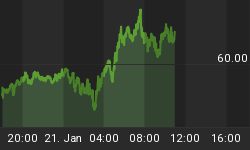It was reported that Tony Pearson, ANZ head of Australian economics, claimed that Australia was becoming two economies, with the mineral-rich states booming while the other states languished. (The Age, Brake on jobs boom as economy cools off, 10 February).
There is nothing knew here. Some years ago The Australian Financial Review published a special report in which it was claimed that "Australia has a dual economy". We got a similar approach from Steve Slifer, chief economist at Lehman Brothers, who said of the US economy in January 2001:
It's really an odd-looking slowdown. The manufacturing sector is, in fact, in a recession but not the overall economy. At least not yet.
So how can an economy be adding jobs while manufacturing is shedding them and forecasts for consumption appear optimistic? This is exactly what happened to the Clinton boom. Manufacturing output fell and employment rose even as consumption raced ahead.
Even most economists don't know that consumption did not even falter during the recession of 2000-01. It was the investment-side of the economy that felt the full force of the downturn, just as I had predicted. In Economic clouds are turning black for US economy (The New Australian, 6 December 2000) I warned, once again, how
...the capital goods industries are the first to feel the pinch, as they find their profits squeezed between rising costs and falling demand for their products which then results in rising unemployment, even as the demand for labour appears to be rising in the consumer goods industries.
This phenomenon is a significant feature of the trade cycle and was commented on in the nineteenth century.
What flummoxes observers is that manufacturing can contract while mining and communications boom. Hence, their attempts to grasp at little-understood economic straws like Schumpeter's trade cycle theory. So instead of giving us a solid economic analysis, we are frequently served up an economic goulash of statistics, comments on structuring and restructuring and cyclical factors, floundering industries, consumption spending, retail sales, patterns of investment, etc. This is not economics.
First things first -- Australia does not have a dual economy. What it has is a heavily distorted economy thanks to the Reserve Bank's criminally loose monetary policy. (since March 1996, when Howard won power, to November 2005 currency expanded by 84 per cent and M1 by 118 per cent).
An elementary knowledge of Austrian capital theory would quickly clear away the kinds of misconceptions that bedevil much that passes for economic commentary in Australian newspapers. As the Austrian school has been stressing for the past hundred years or so, capital consists of a heterogeneous production structure with a time dimension.
In turn, the structure is built up of stages of production. The longer the structure, the greater the number and complexity of the stages: in short, the more capitalistic the structure the more gross savings are needed to maintain it. If gross savings fall, the structure will begin to shrink and real wages will fall. At the apex of the production structure are the highest stages of production, i.e.., the stage furthest removed from consumption; mining is a straightforward example of such a stage.
This brings us to the current state of the Australian economy. Mining is booming but manufacturing appears to be slowing down. Now Australian mining is driven by exports and not domestic needs. That means that the mining industry as a stage of production has been integrated into other countries production structures; meaning that its fortunes are largely independent of the state of Australian manufacturing which consists of intermediate stages of production.
It is a well documented economic fact that consumer industries do relatively better in recessions than the producer goods industries. (Only the Austrian school have been able to satisfactorily explain this phenomenon). This fact along with the orthodox GDP approach has misled the vast majority of economists into thinking that consumer spending is what drives the economy
However, Friedrich von Hayek explained in cons how Keynesian spending policies could alter relative rates of return in favour of consumption. This would direct more and more labour and capital towards the consumption stages at the expense of the higher intermediate stages of production, causing these stage to contract even as the aggregate demand for labour rose. (Profits, Interest and Investment, Augustus M. Kelley Publishers 1975).
In order to arrest a decline in manufacturing the Reserve might let loose with the monetary spigot, just as it did in 2000 when it expanded M1 by 22 percent from January to December. This brings me back to the fallacy that assumption that consumer spending must drive the economy because it makes about 66 per cent of GDP.
In reality, it probably makes up no more than about 30 per cent of genuine gross spending. Because GDP is a value-added approach it deliberately omits spending on intermediary goods. This is why the 66 percent consumption figure greatly inflates consumer spending as a proportion of total spending .
Austrians are forever pointing out, as did the classical economists, that savings fuels investment while consumption adds nothing to growth. Even the schizophrenic neoclassical school admits this when it rightly states that the cost of growth is forgone consumption. (The Austrians also stress that though savings fuels growth it is entrepreneurship that drives it).
Unfortunately the condition of public economic debate in this country is in such a state of decay that the issues raised in this article have been declared out of bounds by our economic commentariat.















